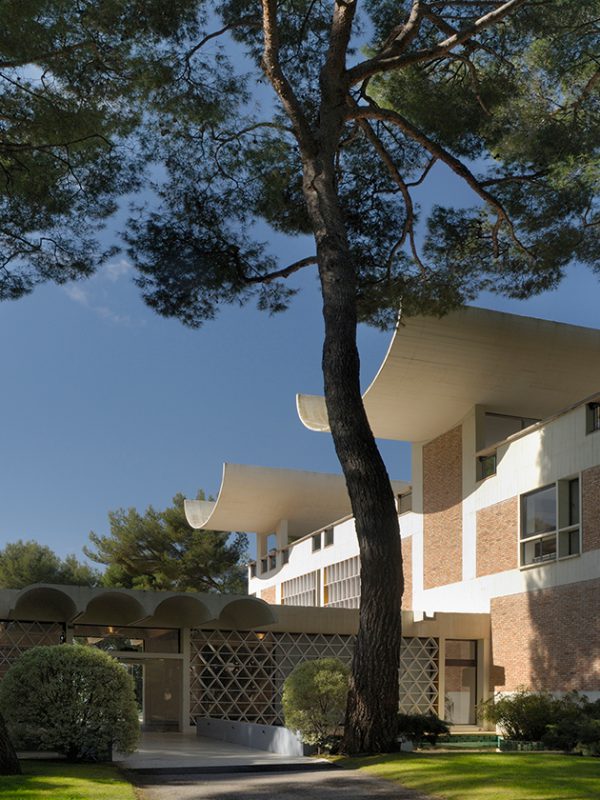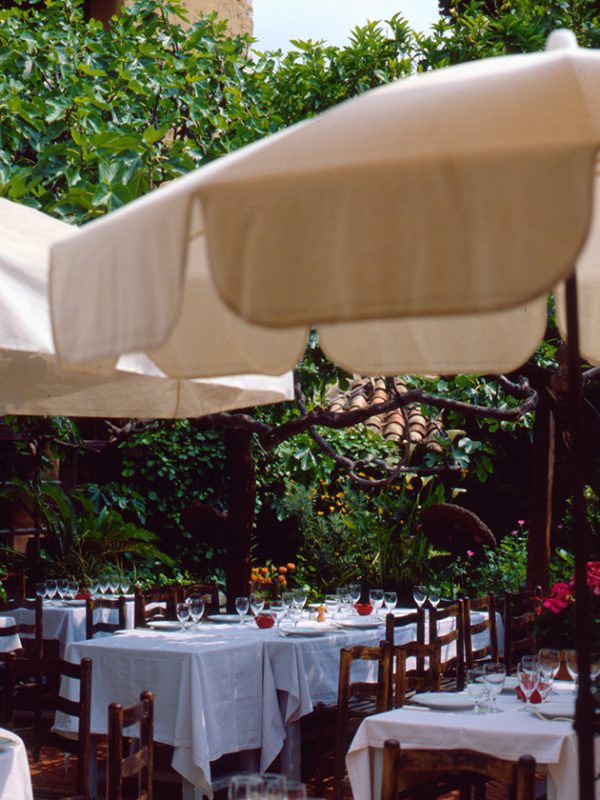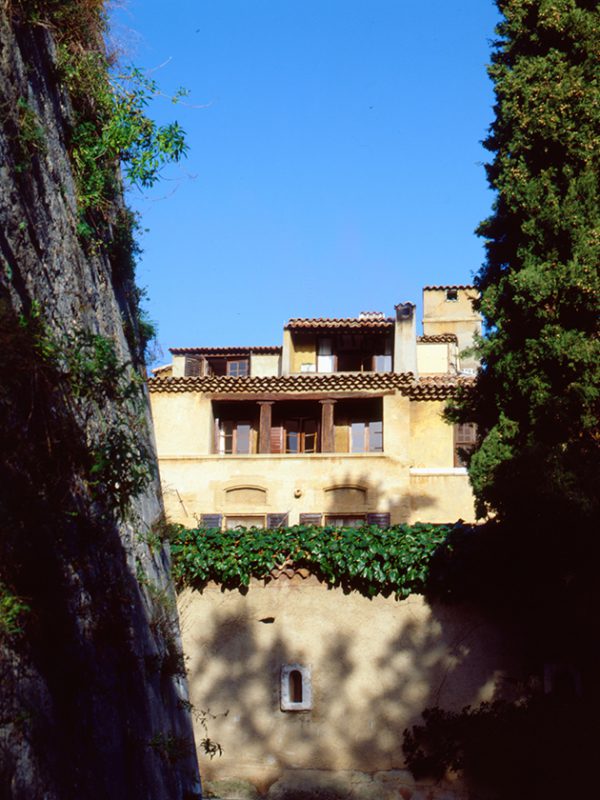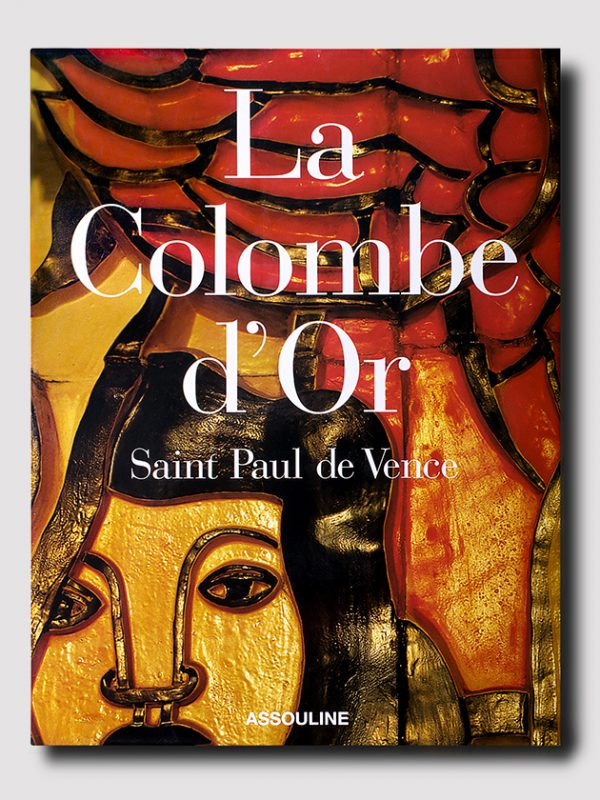Where art lives... by Martin Tschechne | 6th September, 2019 | Personalities
Once a hot spot for some of the greatest Expressionists, today the tiny village of Saint-Paul-de-Vence is a magnet for art lovers and collectors alike. A visit to the legendary Fondation Maeght and the La Colombe d’Or hotel and restaurant where not only Picasso, Chagall and Matisse were regulars.
Henri Matisse arrived in a chauffeur-driven limousine. Because the famous artist was already quite advanced in years and had been experiencing knee problems, the restaurant owner took Matisse’s tea out to the car and sat down next to him there. They chatted as though they were old friends. By the time Paul Roux got out of the car, it seemed like they really had become buddies. The rest is the stuff of legend, like so many things here. The La Colombe d’Or – or Golden Dove – is a hotel in the village of Saint-Paul-de-Vence. Situated in the mountains above Nice, the hamlet is one of those places that seem perpetually bathed in the light of a sleepy summer afternoon. Roux and his wife opened their establishment in 1931. Their maxim, which is also written above the entrance, was “everybody is welcome”: whether they traveled on horseback or on foot, or were on an artistic foray. To this day, they all keep coming back. The village and its more than 30 galleries attract two million visitors a year. One thing people here are keen to avoid is getting stuck in the past. That’s why Saint-Paul-de-Vence decided to organize a biennale of contemporary art, the first one of which took place last summer. Large numbers of people thronged through the picturesque lanes, past sculptures created by David Nash, Jan Fabre and Antony Gormley. With the cheerful hustle and bustle of the lunch service over, the tables at the La Colombe d’Or are being reset, complete with white tablecloths. Sunlight penetrates the thick canopy of orange and lemon trees, drawing patterns of light and dark on the walls. Soon it will be time for a pastis, before the patrons arrive for dinner.
Is this really where Roger Moore threw his co-star Tony Curtis into the pool? Did the beautiful Anouk Aimée arrive with one lover, only to leave with another? And did any of the famous artists ever pay their bill with a painting? François Roux, the founder’s grandson, who has many stories to tell, smiles and gently dismisses the question about the paintings: “No. They all knew the value of art and the cost of a meal.”
“This is a meeting place for musicians, poets and painters.” AIMÉ MAEGHT
Sometimes myth and reality just become so intertwined that they are impossible to untangle as the years pass by. Luckily so! It’s a fact that the Impressionists of the late nineteenth century became fascinated by the soft, glistening light in the hills above the French Riviera, and that many others followed in their footsteps. The narrow, winding lanes of the ancient village on a hilltop continued to exude a calm serenity that made it seem like the rest of the world was moving at a different speed, and that Paris was on another planet altogether. Here, they encountered a hotel owner who deeply loved the place and its tranquility. So they all came, each inspired by a previous arrival: Paul Signac, Raoul Dufy, Georges Braque, Fernand Léger, Amedeo Modigliani, Joan Miró and Marc Chagall. One day even Picasso walked in the door.
They came to experience the magic of the place, to party, to love and to work. And many of them left something behind: a painting, a sculpture or a mosaic. Miró left a silently dancing mobile, César Baldaccini a huge thumb that points upwards, Matisse an exquisite portrait of a woman. Léger’s presence is still felt because of an arrangement of glazed ceramics framed by lush greenery; Picasso’s presence by way of a painting of a vase of flowers. A few years ago the Irish painter Sean Scully installed a strictly abstract wall relief right next to the pool. The hotel has become a treasure trove of at least a half-century’s worth of modern art. Despite all this it has remained true to itself: an auberge with a lush and exuberantly growing garden, a rural restaurant and exemplar of Provençal hospitality. Paul Roux had to add an extension early on. This was constructed using materials from a derelict local chapel, which he had put aside in anticipation. The building looks as though it has never been any different: whitewashed vaulted ceilings, rustic tiled floors. Later on, after his son had taken over the business, Paul Roux himself started painting, under the qualified supervision of Matisse and Picasso – and he wasn’t bad at all. Maybe that was because having a keen sense for the nature and spirit of this place is an art form in its own right.
The gallery owner Aimé Maeght must have felt the power of this place, too, its air of joie de vivre, friendship and free-spiritedness. Up here in the mountains, he founded a private museum roughly 15 minutes’ walk from the hotel. The trained lithographer had fallen in love with art while running a furniture store in Cannes. It made him rich in Paris after the war. Then, his eleven-year-old son Bernard died. Maeght and his wife Marguerite found solace in spending time around artists. In July 1964, they opened the Fondation Maeght on a nearby hill called La Colline des Gardettes. Its grounds feature landscaped gardens, a sculpture park and an exhibition center with a world-famous art collection comprising roughly 15,000 works. The founder said he wanted to create “a building in which musicians, poets and painters can meet and collaborate.” Ella Fitzgerald sang at the opening.
“Everyone is welcome.” PAUL ROUX
Joan Miró had promised he would paint rocks if it helped liberate the gallery owner from his grief. He also won over his friend and compatriot, Catalan architect Josep Lluís Sert, for the project. Together, they designed the labyrinth of gardens and terraces around the building. Sert’s flat structure, made of brick with white and beige concrete, blends into the landscape. Braque contributed a small water feature made of a colorful mosaic, Miró some of his organic abstract shapes, and Pol Bury a kinetic fountain sculpture. Swiss artist Alberto Giacometti found room in the garden for 52 of his small sculptures; his brother Diego supplied the cast-iron furniture for the café. The Maeghts themselves contributed works of art from their collection: Pierre Bonnard, Wassily Kandinsky, Chagall, Calder, Léger and Antoni Tàpies. It all fit together perfectly. Located in a tranquil pine tree grove, the Fondation is a memorial and a place of reflection for roughly 200,000 visitors a year.
As evening falls, the tables at the La Colombe d’Or are being set again. Romy Schneider and Alain Delon whispered sweet nothings to each other here, Yves Montand first saw and fell passionately in love with Simone Signoret. Jean-Paul Sartre was here with Simone de Beauvoir, Charlie Chaplin and Orson Welles were frequent visitors, as were Maria Callas, Sophia Loren and a barefooted Brigitte Bardot. Life, a gift of lightness and light, was celebrated here at the “Golden Dove.” The author Raymond Queneau wrote at the table where André Gide had put together some prose. Liza Minnelli blew kisses at her admirers. An American businessman once offered to buy the establishment from its owner, but Paul Roux thanked him by sending a bouquet of flowers and a note that read: “The flowers are for you, the Colombe is for my son.”








